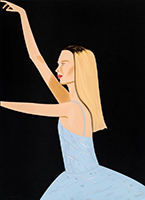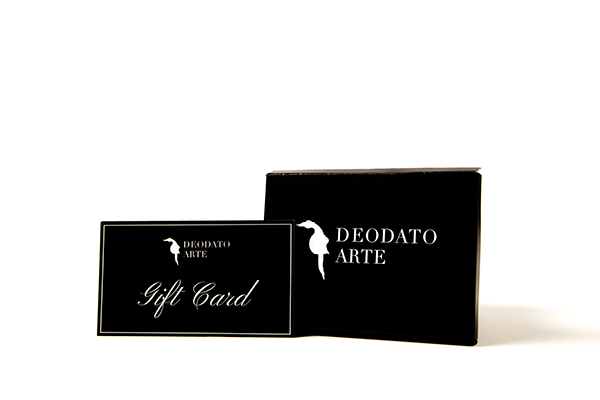Japan Pop Art: 5 Iconic Japanese Artists
Japanese art has never been as popular as it is now.
Currently, many artists are using traditional Japanese culture and aspects of mass culture to create works in Japan Pop Art style.
5 Artists Who Create Japanese Pop Art
Numerous artists have contributed to the development of Japanese Pop Art. Yet we look at 5 artists who have devoted themselves to this style:
Takashi Murakami
One of the artists more known in the Japanese art scene is undoubtedly Takashi Murakami, named by Time Magazine as the most influential representative of contemporary Japanese culture.
The imagery of themes and styles of mass culture from his country has inspired Murakami’s work. He has been compared to Andy Warhol as they are both inspired by mass culture and reference the iconography of anime and manga. Murakami stated that his art originated specifically from the Otaku phenomenon.
Japanese culture is represented in the subjects and in the two-dimensionality of Takashi Murakami’s work. Japanese art is known for intense two-dimensional images. Murakami defines a style of his own named Superflat, where elements of Japanese subculture and culture blend and flatten into brightly colored images. In 2000, Murakami created a collective exhibition entitled Superflat that integrated the aesthetics of tradition, pop culture, and Otaku. The exhibition laid the foundation for the Superflat movement, standing as a reference for artists who recognize the cultural originality of contemporary Japan.
In addition to being the father of Superflat, Murakami helped bridge the gap between so-called “ high art” and “ low art” and contributed to the blurring of the boundary between so-called high art and low art. "High art" refers to art primarily intended for museums and wealthy collectors, while "low art," the latter reserved exclusively for mass consumption. Murakami noted how this boundary is idealistic and Western and how this division of art is nonexistent in Japan. For this reason, the artist also markets diaries, candy, toys, puppets, skateboards, T-shirts, pillows, wallpapers, and his most famous artworks.
Yayoi Kusama
Yayoi Kusama is a relevant artist not only for Japan Pop Art. She began her career thanks to the father of Pop Art, Andy Warhol, who bought Kusama’s first painting. Compared to Takashi Murakami, her works do not reference images from mass culture but directly from her feelings. Kusama prefers to show her state of mind through natural elements such as iconic pumpkins and the use of human bodies for performance art.
As well as Murakami, Kusama has managed to gain fame not only among the world's most renowned collectors or institutions but also among the mass public, thanks to several collaborations with world-renowned brands (one of them being with Louis Vuitton). Kusama first collaborated with them in 2012 under the artistic direction of Marc Jacobs and renewed their collaboration in 2022.
"I am determined to create a Kusama world that no one has ever seen before." - Yayoi Kusama
Takashi Hiroyuki
An international enthusiast of Mood Shōjo, Takashi Hiroyuki transforms his passion for Shōjo into art. Similarly to Murakami, Hiroyuki also draws from mass culture and manga comics, yet reverts to the typical style of Shōjo or manga where females are the target audience.
The strongly Superflat-inspired style expresses a pop, feminine, and transgressive language typical of Mood Shōjo, highlighting the neo-feminist culture that the artist supports.
His work is inspired by this specific world of manga entirely dedicated to girls (Shōjo directly translates to girl) and shows female figures within urban contexts.
Tomoko Nagao
In addition to the Superflat and Shōjo movements, there is also the Micropop Art movement in which Tomoko Nagao is a leading figure. Nagao’s art is not only inspired by the work of Caravaggio, Velázquez, and Botticelli but also by elements of mass culture. She makes these elements into her own and incorporates them into her compositions. This is how brands like Coca-Cola, Play Station, and Barilla blend with the Micro Pop and Superflat styles.
With this idea, the artwork of Tomoko Nagao has become a metaphor for globalization and is, therefore, easier to understand. Also, thanks to the concept of Kawaii, the subject and characters of her work are considered more “cool”.
Yoshimoto Nara
Yoshimoto Nara is another significant Japanese artist who has contributed dynamically to the growth of Japan Pop Art. Influenced primarily by Japanese comic books and anime, Nara takes the lines and eyes of characters and reworks them in his works.
The favorite subjects are not objects or people widely known to the masses, but rather common protagonists such as children and dogs, highlighted for their sweetness and innocence. However, these subjects in Nara's works conceal an aura of horror. Looking closely at the works, one can see children wielding weapons, such as knives and saws, directing an often accusatory gaze at the viewer.
To the people who saw violence within the subjects, Nara refuted those comments with this response:
“ Look at them, their weapons are as small as toys. Do you think they could fight with those? I don’t think so Instead I see children surrounded by older, meaner people, armed with larger knives…”. - Yoshimoto Nara
In the end, therefore, the real aggressors are not the subjects of the works, but instead we, the viewers, who are guilty of attacking the innocence of childhood all too often.
Japan Pop Art that conquers the West
Japanese artists have conquered the West, whether Superflat, Micro Pop, conceptual, or minimalist. They have managed to create artworks that encapsulate both Japanese and Western cultures.
From the references to the big brands of consumer society to collaborating with haute couture brands, these artists have managed to spread Japanese culture uniquely and originally. Learn more about Japan Pop Art by visiting the Deodato Arte Galleries collections.











 Register
Register Wishlist
Wishlist Contact Us
Contact Us





